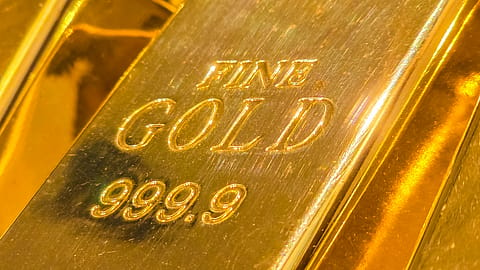Gold posts strongest quarterly gain since 1986 amid tariffs and rate uncertainty; silver lags on weak demand outlook
The bullish sentiment in global gold prices was mirrored by movements in MCX gold futures, which surged more than 7% to an all-time high of ₹90,100/10 grams.

In March, COMEX gold near-month futures surged by 9.6%, a $274 per ounce increase, reaching a record high above $3,130. This marked the strongest quarterly performance since 1986, driven by robust central bank purchases and heightened demand for safe-haven assets amid geopolitical and economic uncertainties. President Trump's decision to impose permanent 25% tariffs on auto imports exacerbated trade tensions. Year-to-date, gold prices have risen over 19.2%, with investment inflows into ETFs remaining strong. SPDR Gold Shares, the world’s largest gold-backed ETF, added 37 tons, bringing its total holdings to 910 tons, the highest in 17 months.
The bullish sentiment in global gold prices was mirrored by movements in MCX gold futures, which surged more than 7% to an all-time high of ₹90,100 per 10 grams. However, these record-high prices dampened physical demand, especially in the jewellery sector, with purchases primarily focused on wedding-related needs. The high prices also led to a sharp rise in gold-backed loans, with retail gold loans by commercial banks increasing 77% year-on-year by the end of January. The World Gold Council reported net inflows of ₹19.8 billion (~US$227 million) into Indian gold ETFs in February, marking the tenth consecutive month of positive inflows despite higher redemptions.
Also, Federal Reserve kept its benchmark interest rate unchanged in the FOMC March meeting, signaling a cautious approach toward future rate cuts. The Fed revised its 2025 GDP growth forecast down to 1.7%, while raising its core inflation outlook to 2.8%. Market expectations for a 25-basis-point rate cut stand at 21% for the May FOMC meeting and 72% for June, adding to market uncertainty.
Additionally, escalating geopolitical risks—ranging from intensified U.S. strikes against Houthi rebels in Yemen, Israel’s deadliest attack on Gaza breaking a two-month ceasefire, and ongoing Russia-Ukraine tensions—have further bolstered gold's appeal as a safe-haven asset.
After a stellar performance in the March quarter, gold extended its strong momentum into the June quarter, with COMEX Gold June Futures soaring past $3,200 per ounce, driven by heightened risk aversion sparked by Trump's tariff announcement on April 2. Trump introduced a 10% baseline tariff on imports from all countries, with higher rates targeting nations with trade surpluses, including China (34%), the EU (20%), and Japan (24%). A 25% tariff was also imposed on foreign-made automobiles. However, bullion remained exempt, as confirmed by a White House factsheet. Spot gold also reached a record $3,167.59 per ounce, underscoring the strong momentum in precious metals.
Looking ahead, gold's trajectory will largely depend on how key trading partners respond to Trump’s tariffs. If reciprocal tariffs escalate trade tensions, with China and the EU already vowing retaliation, gold could extend its rally toward $3,300. Conversely, if negotiations ease tensions, improved risk sentiment may lead to a corrective decline toward $3,035. Key levels for MCX gold are ₹94,500 and ₹87,200. Amid ongoing macroeconomic volatility and continued central bank accumulation, gold remains a crucial asset, providing a hedge against economic and geopolitical instability.
Meanwhile, COMEX silver surged to a 13-year high of $35.495 per ounce, gaining 9.65% over the past month as escalating global trade tensions fuelled safe-haven demand. Trump’s renewed push for reciprocal tariffs heightened concerns about inflation and economic growth risks. However, silver retreated 6.5% from its March peak amid weakening industrial metals demand. While safe-haven flows may provide short-term support, a slowing economy and subdued industrial consumption could cap further gains. Investors will monitor global economic indicators and Federal Reserve policy for direction, with silver’s outlook depending on macroeconomic stability and demand fundamentals.
Recommended Stories
Views are personal. The author is AVP - Commodity Research, Kotak Securities.